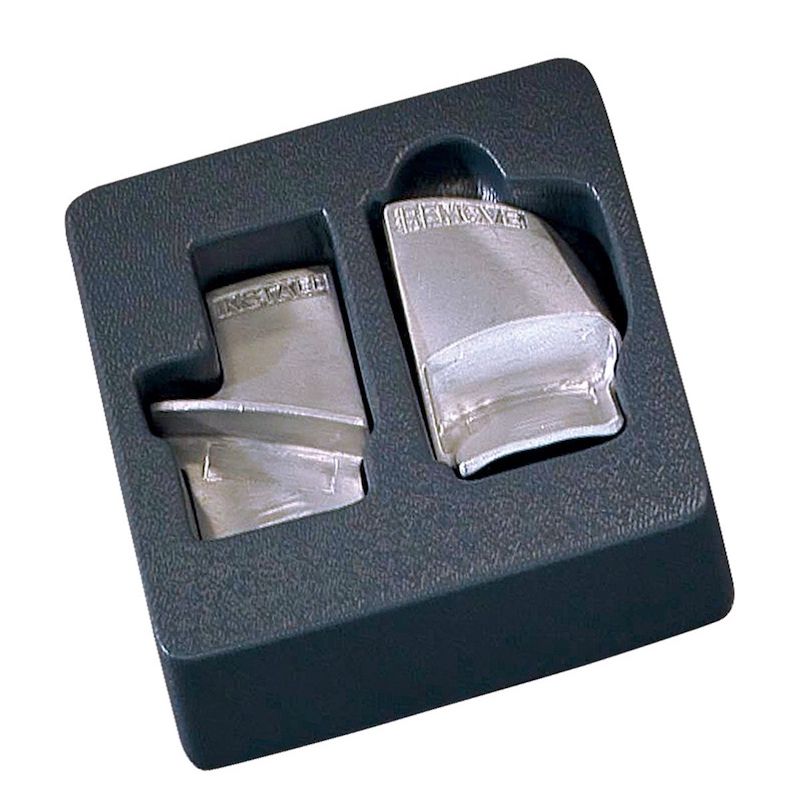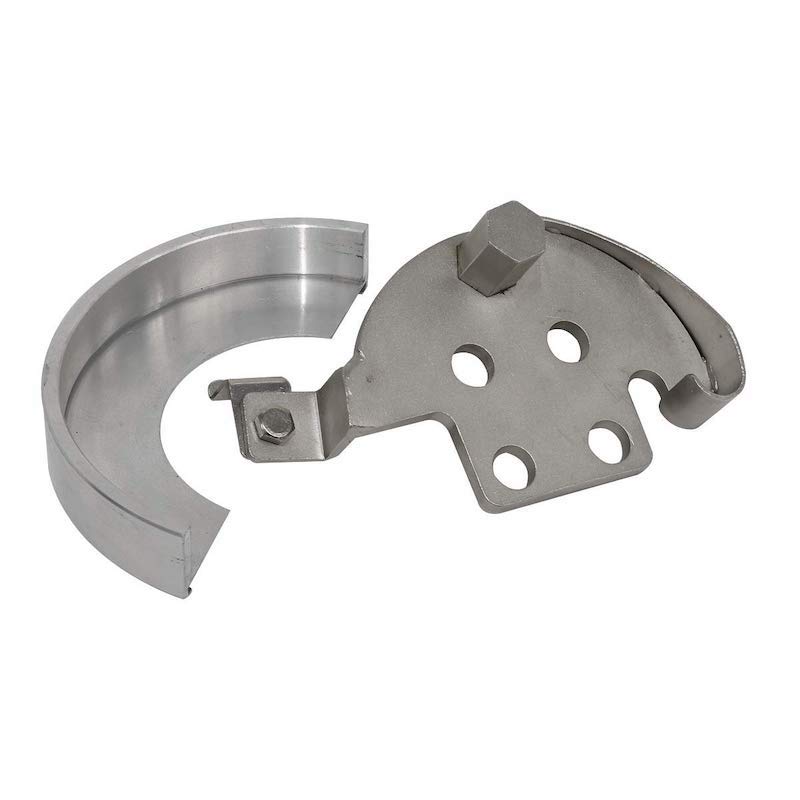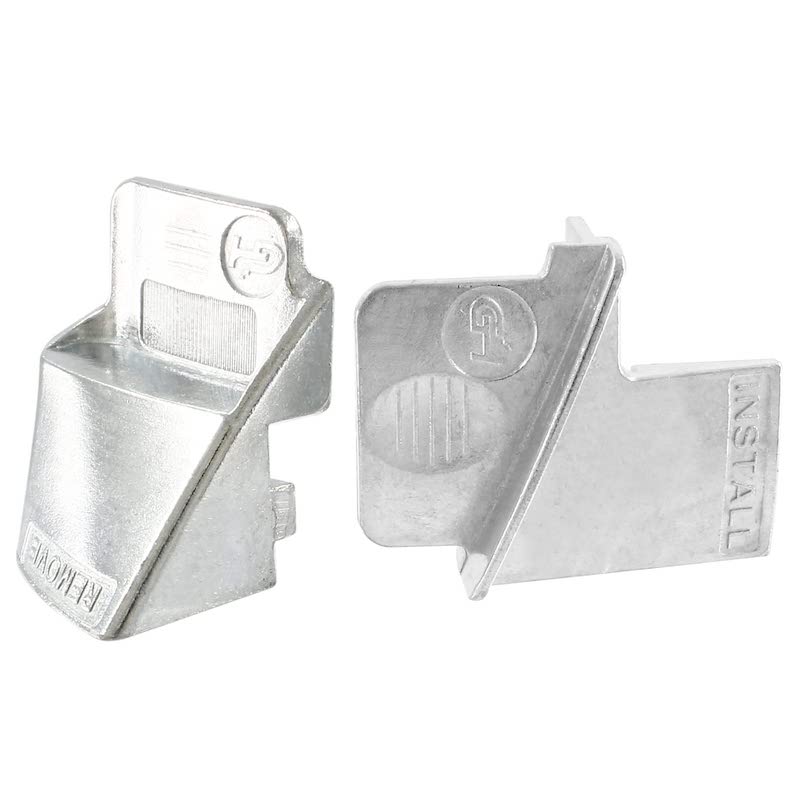
All You Need to Know About the Stretch Belt Tool
Introduction
A stretch belt tool is a handy device used for installing and removing stretch belts on various automotive applications. Stretch belts, also known as elastic belts or serpentine belts, are used in modern engines to drive several components such as the alternator, water pump, power steering pump, and air conditioning compressor. These belts do not have any tensioner or adjustment pulley and rely on their elasticity to maintain proper tension. This unique design requires a different approach when installing or removing them, and this is where a stretch belt tool comes in.
In the world of automotive repairs, having the right tools for the job is essential. One such tool that is commonly used in the repair and maintenance of vehicles is the stretch belt tool. This handy device is designed to assist in the installation and removal of stretch belts, making the process much easier and more efficient. In this article, we will explore the ins and outs of stretch belt tools, including its uses, benefits, and how to choose the right one for your needs.
Part 1: What is a Stretch Belt Tool?
In addition to installation, a stretch belt tool can also be essential for removing a stretch belt without damaging it or the surrounding components. The tool allows for controlled stretching of the belt, making it easier to slip off the pulleys without the risk of sudden release and potential injury.
Stretch belt tools is the valuable addition to any automotive technician’s toolbox. It makes the task of working with stretch belts much more manageable and safer, ensuring proper tension and reducing the risk of damage or injury. Whether in a professional garage or home workshop, a stretch belt tool is a worthwhile investment for anyone working on vehicles equipped with stretch belts.
Level 1: The basics of a stretch belt tool
A stretch belt tool is a specialized tool that is used to install and remove stretch belts on a vehicle’s engine. These belts are commonly found in modern vehicles and are designed to provide a more secure and efficient means of transferring power from the engine to various components, such as the alternator, water pump, and air conditioning compressor.
Level 2: How stretch belt tools work
The stretch belt tool works by allowing the user to easily stretch the belt and slip it over the pulleys. Eliminating the need for excessive force or the risk of damaging the belt. The tool typically consists of a handle and a set of arms that can be adjusted to fit the specific size and shape of the stretch belt being installed or removed.
Part 2: Uses of a Stretch Belt Tool
Level 1: Installing stretch belts
One of the primary uses of stretch belt tools is for installing stretch belts onto a vehicle’s engine. This process can be quite difficult and time-consuming without the proper tool, as the belts need to be stretched over the pulleys in a precise and controlled manner.
Level 2: Removing stretch belts
In addition to installing stretch belts, the stretch belt tool is also used for removing them. This can be equally challenging without the right tool, as the stretch belts can become tightly wedged onto the pulleys. Making them difficult to remove by hand.
Part 3: Benefits of Using a Stretch Belt Tool
Level 1: Time-saving
Using stretch belt tools can save a significant amount of time when installing or removing stretch belts. The tool allows for quick and easy maneuvering of the belt. Eliminating the need for multiple attempts to get it in place.
Level 2: Preventing damage
When installing or removing stretch belts without a proper tool, there is a risk of damaging the belt or the pulleys. The stretch belt tool helps to prevent such damage by providing a controlled and even distribution of force during the process.
Part 4: Choosing the Right Stretch Belt Tool
Level 1: Consider the size and shape of the belt
When choosing stretch belt tools, it is important to consider the size and shape of the stretch belts you will be working with. Different tools can accommodate different belt sizes and configurations, so be sure to choose one that is suitable for your specific needs.
Level 2: Quality and durability
The quality and durability of the stretch belt tools are also important factors to consider. Look for a tool that is made from high-quality materials and is designed to withstand the rigors of frequent use.
Part 5: Tips for Using a Stretch Belt Tool
Level 1: Familiarize yourself with the tool
Before using stretch belt tools, take the time to familiarize yourself with its features and how it operates. This will help to ensure that you use the tool correctly and safely.
Level 2: Follow the manufacturer’s instructions
Always follow the manufacturer’s instructions when using stretch belt tools. This will help to prevent damage to the tool or the belts, and ensure that the process is carried out effectively.
Part 6: Benefits of Using a Stretch Belt Tool
Level 1: Increased Efficiency
Using stretch belt tools can significantly improve the efficiency of belt replacement. The tool can properly tension the belt, ensuring that it is installed correctly. This can reduce the risk of potential damage to the belt and other engine components, saving time and money on future repairs.
Level 2: Versatility
The stretch belt tools is the versatile piece of equipment on a wide range of vehicles. Whether you are working on a car, truck, or SUV, having stretch belt tools in your arsenal can make the belt replacement process much easier and more precise. This versatility makes it a valuable tool for mechanics and DIY enthusiasts alike.
Part 7: Tips for Using a Stretch Belt Tool
Level 1: Read the Instructions
Before using stretch belt tools, it is important to carefully read the instructions that come with the tool. Different tools may have varying methods of use. So it’s crucial to understand the specific guidelines for the tool you are using.
Level 2: Inspect the Belt
Before using stretch belt tools, inspect the belt for any signs of wear or damage. It’s important to replace the belt if there are any issues, as using a damaged belt with the tool can lead to further complications. By ensuring the belt is in good condition, you can maximize the effectiveness of stretch belt tools.
Part 8: Maintenance of a Stretch Belt Tool
Level 1: Regular Cleaning
To maintain the functionality of stretch belt tools, it’s important to keep it clean and free of debris. Regularly wipe down the tool with a clean cloth and, if necessary, use a small brush to remove any build-up in the mechanism.
Level 2: Lubrication
Proper lubrication is essential for the smooth operation of stretch belt tools. Applying a small amount of lubricant to the moving parts of the tool can reduce friction and extend its lifespan. It’s important to use a lubricant that is compatible with the material of the tool to prevent damage. Regularly inspecting and maintaining the tool will ensure it remains in good working condition for future use.
Conclusion
The tool typically consists of a pair of prongs that securely grip the belt and a handle that allows the user to stretch the belt and slip it over the appropriate pulleys easily. The prongs can accommodate the width of the belt and ensure a tight grip without damaging or deforming the belt. Some models may also feature a ratcheting mechanism that allows for a more controlled and precise stretching of the belt.
The stretch belt tools is the valuable asset for anyone working on modern vehicles that utilize stretch belts. It offers a quick, efficient, and safe means of installing and removing these belts. Ultimately saving time and preventing unnecessary damage. Understanding the uses, benefits, and how to choose and use right stretch belt tools. You can make your automotive repair and maintenance tasks much easier and more successful.
Watch Back Removal Tool – Everything You Need to Know
Introduction:
When it comes to repairing or replacing the battery of a watch, there are certain tools that every watch enthusiast or professional should have in their arsenal – one of them being a watch back removal tool. This tool helps in removing the back cover of the watch case to access the internal components. A watch back removal tool is an essential tool for watchmakers as well as for DIY enthusiasts who want to fix their timepieces themselves. In this article, we will discuss everything you need to know about watch back removal tool – its types, uses, and tips for choosing the right one.
Having a watch back removal tool is essential for anyone interested in watch repair or maintenance. By avoiding common mistakes such as using the wrong tool or applying excessive force, you can ensure that your watch case remains undamaged. Among the top options in the market, the Bergeon 6767-F Watch Spring Bar Tool is known for its versatility in opening snap-on cases and removing spring bars. The SE JT6221 Watch Back Opener is a reliable choice for screw-back watch cases. Remember that with the right tool and proper usage, you can confidently and safely access the internal components of your watch for repairs or maintenance, prolonging its longevity and performance.
Part 1: Understanding Watch Back Removal Tool
Level 1: Definition of Watch Back Removal Tool
A watch back removal tool is a hand tool designed to remove the back cover of a watch case. It is a simple but essential tool for watch enthusiasts and professionals as it helps in accessing the internal components of the watch, like the battery, movement, or dial.
Level 2: Types of Watch Back Removal Tool
There are mainly two types of watch back removal tool: the watch case knife and the watch case opener. The watch case knife is a simple tool that resembles a small knife blade with a sharp, pointed tip. It is specifically designed for opening snap-on watch cases by sliding the blade under the edge of the watch back and twisting it gently. On the other hand, a watch case opener is a more complex tool that uses adjustable claws or pins to grip onto the notches or holes on the back of the watch case. It is designed for opening screw-back watch cases, which require a bit more force to open.
Part 2: Uses of Watch Back Removal Tool
Level 1: Removing the Back Cover
The primary use of a watch back removal tool is to remove the back cover of a watch case. This enables the watchmaker or DIY enthusiast to access the internal components of the watch and perform various repairs or maintenance tasks, such as replacing the battery, adjusting the movement, or cleaning the dial.
Level 2: Opening Various Watch Cases
The tool can open various types of watch cases, including snap-on cases, screw-back cases, and even water-resistant cases. Depending on the type of case, one needs to choose the right type of watch back removal tool to ensure a safe and effective opening.
Part 3: Choosing the Right Watch Back Removal Tool
Level 1: Consider the Type of Watch Case
When choosing a watch back removal tool, the first thing to consider is the type of watch case that needs to be opened. For snap-on cases, a watch case knife is a better option, while for screw-back cases, a watch case opener is a better choice.
Level 2: Consider the Quality of the Tool
Another important factor to consider when choosing a watch back removal tool is the quality of the tool. Look for a tool that is made of durable and high-quality materials and has a comfortable grip. Cheaper tools may break easily or damage the watch case, so investing in a quality tool can save you money in the long run.
Part 4: Tips for Using Watch Back Removal Tool
Level 1: Protect the Watch from Scratches
When using a watch back removal tool, it is essential to protect the watch from scratches or any other damages. One can use a protective cloth or tape to cover the case before applying the tool. This will help in preventing any accidental scratches or marks on the watch case.
Level 2: Use the Tool Properly
Using the tool properly is also essential to avoid any damages to the watch or the tool. Follow the instructions carefully and use the necessary force to open the watch case. Avoid twisting or applying too much force as it may damage the watch or the tool.
Part 5: Common Mistakes to Avoid When Using Watch Back Removal Tool
Level 1: Using the Wrong Tool
One of the common mistakes that people make while using a watch back removal tool is using the wrong tool for their watch case. It is important to identify the type of watch case and choose the appropriate tool, whether it is a watch case knife or watch case opener.
Level 2: Applying Too Much Force
Another mistake that people often make is applying too much force while opening the watch case. It can lead to damage to the watch case or the internal components, such as the movement or the dial. It is important to use the necessary force and follow the instructions carefully.
Part 6: Top Watch Back Removal Tools in the Market
Level 1: Bergeon 6767-F Watch Spring Bar Tool
Bergeon is a well-known brand in the watch industry, and the Bergeon 6767-F Watch Spring Bar Tool is one of its popular models. It is an all-purpose tool that comes with a sharp blade for opening snap-on cases and a forked tip for removing spring bars.
Level 2: SE JT6221 Watch Back Opener
The SE JT6221 Watch Back Opener is a simple yet effective tool designed for opening screw-back watch cases. It comes with adjustable claws that fit onto the notches on the watch back, allowing for easy and safe opening.
Conclusion
A watch back removal tool is a crucial tool for repairing or maintaining a watch. With the right tool, one can access the internal components of the watch and perform various tasks without damaging the watch case. It is important to choose the right tool, to use it properly, and to protect the watch while using it. We hope you understand everything you need to know about watch tool. And make an informed decision while buying one.
A watch back removal tool is an essential tool for every watch enthusiast or professional. It helps in accessing the internal components of a watch and performing various repair and maintenance tasks. It is important to choose the right tool, apply the necessary force, and protect the watch while using it. Some of the top watch back removal tools in the market include the Bergeon 6767-F Watch Spring Bar Tool and the SE JT6221 Watch Back Opener. With the right tool and proper use, one can keep their timepiece in top condition for years to come.
In conclusion, using a tool for watch is essential for watch enthusiasts and professionals alike. Avoiding common mistakes, such as using the wrong tool or applying too much force. It is crucial to prevent damage to the watch case and the tool itself. The Bergeon 6767-F Watch Spring Bar Tool and the SE JT6221 Watch Back Opener are top choices in the market due to their effectiveness and reliability. By selecting the right tool and using it correctly, watch owners can safely access the internal components of their timepieces for maintenance or repair purposes.





